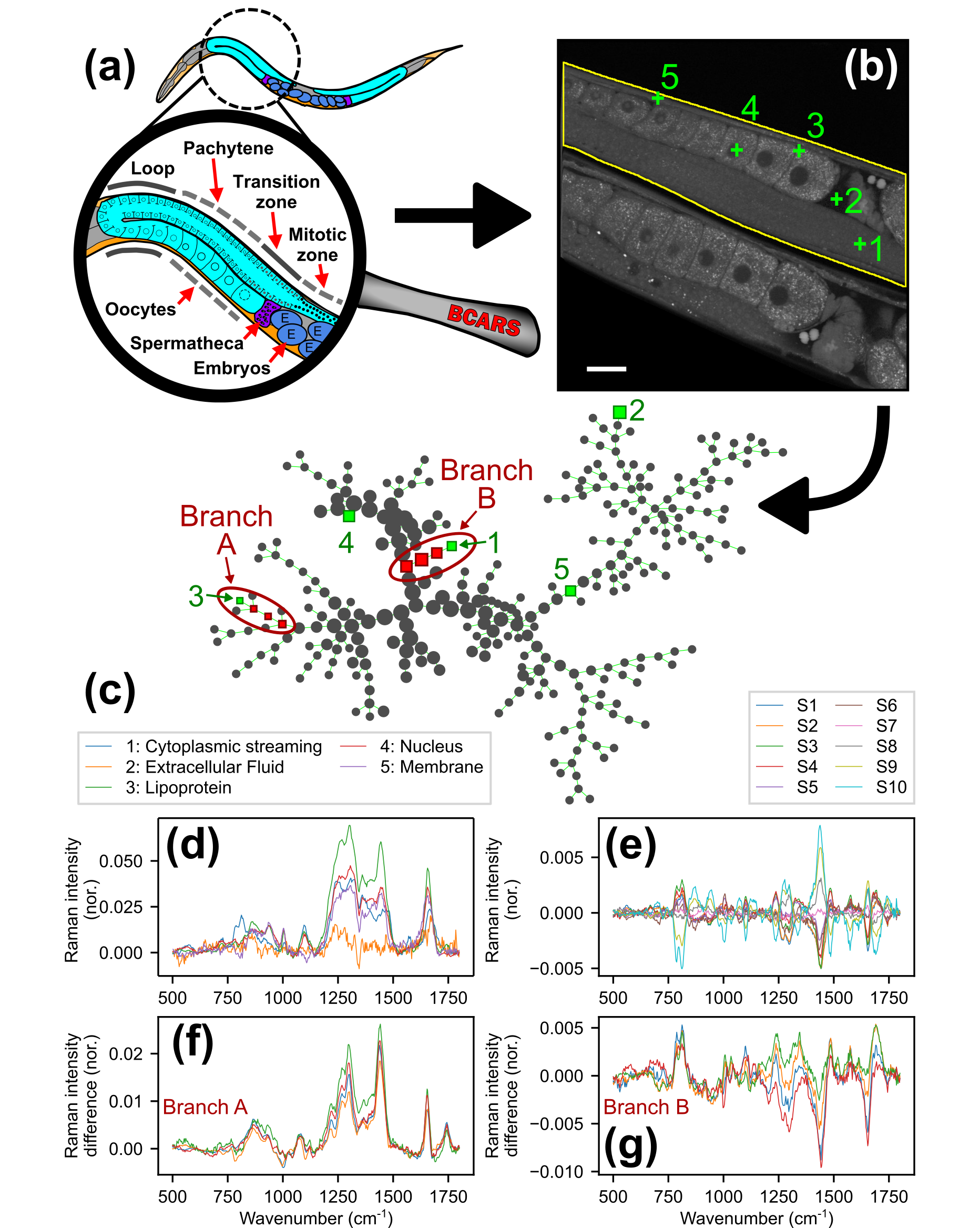2023 AIChE Annual Meeting
(635c) Towards Gene-Correlated Live-Cell Spatial Metabolomics with Fingerprint Raman Microscopy
Authors
Figure: BCARS imaging of C. elegans gonad and SPADE (Spanning-tree Progression Analysis of Density-normalized Events) analysis. (a) Schematic drawing of a C. elegans hermaphrodite reproductive system. (b) 2925 cmâ1 BCARS image of two wild-type adult worms. The yellow line indicates the outline of the upper worm (âUpâ). Scale bar, 20 μm. (c) SPADE tree representation of fingerprint BCARS spectra from the outlined area. The pixels 1-5 shown in (b) belong to the indicated nodes on the SPADE tree. (d) BCARS spectra corresponding to the 5 pixels, with their identities labelled in the legend. (e) Spatially-averaged difference spectra of 10 linear gonad sections of Up, with the mean spectrum of the entire Up gonad being subtracted. (f,g) Difference spectra corresponding to each node in branches A and B (respectively) labelled in (c). The mean spectrum of the full Up worm is subtracted. Note that the difference spectra are similar within a branch, but completely different across branches.
